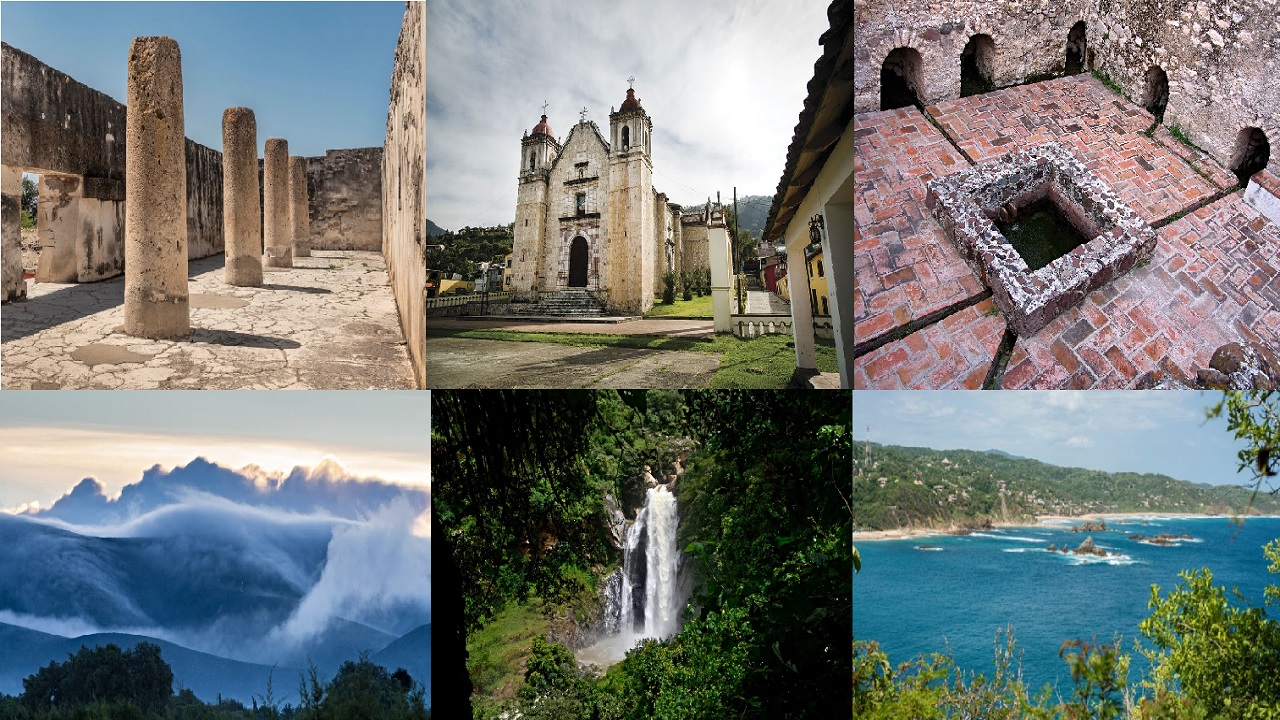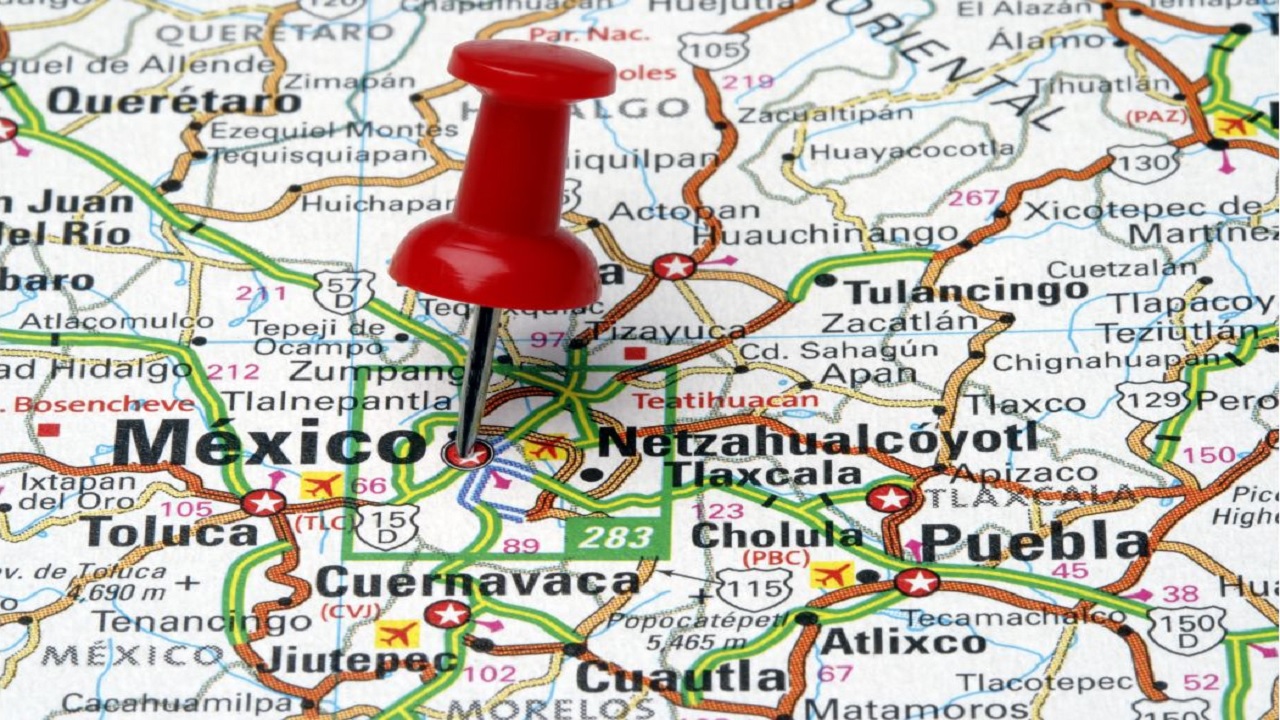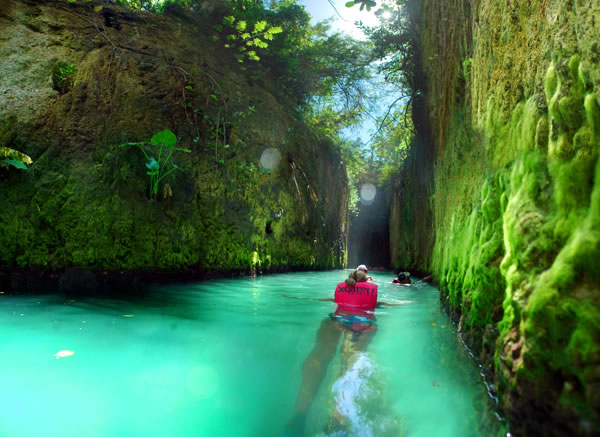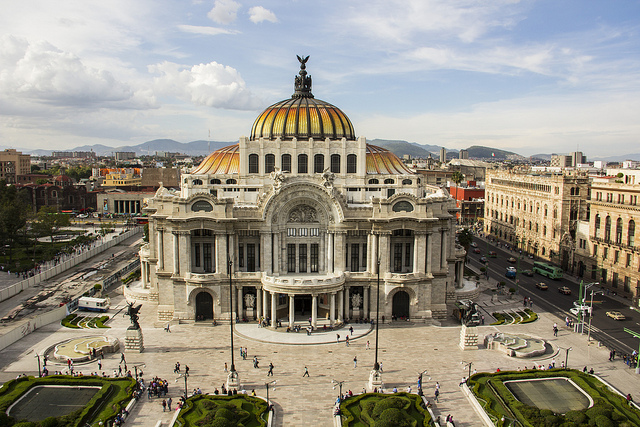Mexico is a great and diverse country with something for everyone. From the bustling city streets of Mexico City to the white sandy beaches of the Mexican Caribbean, there is always something new and exciting to discover.
But planning a trip to Mexico can be overwhelming, especially if it’s your first time visiting the country. In this guide, we’ll go over some useful tips to plan the perfect trip to Mexico.
1. Choose your destination(s) and identify them on the map
Mexico is a large country with a wide range of vacation destinations to choose from, and visiting all the main options in 1 trip is very difficult so you need to choose which destinations are better for the kind of trip you want and the time you have available.
There are a lot of good beaches, big cities, colonial cities and the also-called “Magical Towns” (pueblos magicos).
Some popular options include:
- Cancun: Located on the Yucatan Peninsula, Cancun is well known for its crystal-clear waters and white sandy beaches. It’s a popular destination for beach lovers and partygoers alike.
- Playa del Carmen: Around 1hr south of Cancun, Playa del Carmen is a more laid-back alternative with a lively downtown area and a wide range of activities and excursions to choose from.
- Mexico City: Mexico’s capital and largest city, Mexico City is a vibrant metropolis with a rich history and culture. It’s home to a wide range of museums, galleries, and historic sites, as well as a lively nightlife scene.
- Oaxaca: Located in the southern part of Mexico, Oaxaca is known for its colonial architecture, indigenous culture, and delicious food. It’s a great destination for those interested in Mexican history and culture.
- Tulum: Located also on the Caribbean Coast, Tulum is a laid-back beach town with a bohemian vibe. It’s known for its stunning beaches and eco-tourism opportunities.
Check our list of the 15 Most Beautiful Cities in Mexico to get inspiration and choose your destinations!

2. Plan your travel dates
Mexico is a year-round destination, but certain times of year are better for different activities. For example, the dry season (December to May) is the best time to visit the beaches, while the wet season (June to November) is the best time to visit the mountains and rainforests. Keep in mind that peak tourist season is typically from December to April and July – August, so prices may be higher and crowds may be larger during this time. If you can, traveling in the low season is the best option to enjoy all the destinations without crowds.

3. Book your accommodation and flights
Once you have chosen your destination and travel dates, it’s time to book your flights and accommodations. There are a lot of options to choose from, including hotels, luxury resorts, vacation rentals (like airbnb), and hostels. When choosing accommodations, consider your budget, the location, and the amenities that are important to you. A lot of beaches in Mexico have the famous “all-inclusive” meal plan, where you have lodging + meals, snacks and beverages included in the price.
For flights, it’s a good idea to start looking for deals in advance. Keep in mind that prices can vary significantly depending on the time of year and the demand for flights. It’s also a good idea to compare prices from different airlines and online travel agencies.
Many airlines offer flights from the United States to Mexico. Some of the major airlines that operate flights to Mexico include:
- American Airlines: American Airlines offers flights to a wide range of destinations in Mexico, including Mexico City, Cancun, Puerto Vallarta, and Cabo San Lucas.
- Delta Air Lines: Delta Air Lines operates flights to a variety of destinations in Mexico, including Mexico City, Cancun, and Puerto Vallarta.
- Southwest Airlines: Southwest Airlines offers flights to several destinations in Mexico, including Cancun, Puerto Vallarta, and Cabo San Lucas.
- United Airlines: United Airlines operates flights to several destinations in Mexico, including Mexico City, Cancun, and Puerto Vallarta.
- Aeromexico: Aeromexico, Mexico’s national airline, offers flights to a wide range of destinations within Mexico and also operates flights from several cities in the United States to Mexico.
Many other airlines offer flights from the United States to Mexico, including Alaska Airlines, Spirit Airlines, and JetBlue. And if you fly from another country the main touristic cities in Mexico (like Mexico City, Cancun, Guadalajara) receive direct flights from all over the world.

4. Get all your documents in order
Before you travel to Mexico, you’ll need to make sure you have the proper documents. U.S. citizens traveling to Mexico for tourism purposes for less than 180 days do not need a visa, but you will need a valid passport. It’s a good idea to make a copy of your passport and leave it with a friend or family member in case of an emergency.
If you’re planning on staying in Mexico for a longer period of time or engaging in activities other than tourism (such as studying, working, or doing business), you may need to obtain a visa.
There are several types of visas available for travel to Mexico, including tourist visas, business visas, student visas, and work visas. The type of visa you need depends on the purpose of your trip and the length of your stay. You can find more information about the different types of visas and the requirements for obtaining one at the Mexican embassy or consulate in the United States or the special one for your country.
You should also consider purchasing travel insurance to protect yourself in case of any unforeseen circumstances, such as flight delays, lost luggage, or medical emergencies, medical services are not as expensive as in the U.S. but it’s always better to have insurance for peace of mind.

5. Plan your activities and excursions in advance
Mexico is a country with a wide range of activities and excursions to choose from, depending on your interests and location. Some popular options include:
- Visiting the Mayan ruins: Mexico is home to a wide range of ancient Mayan cities, such as Tulum, Chichen Itza, and Uxmal. These sites are a must-see for history buffs and offer a glimpse into the sophisticated culture and architecture of the ancient Maya.
- Going to the beach: Mexico has a long coastline with a wide range of beaches to choose from, ranging from peaceful and serene to lively and party-centric. Whether you’re looking to relax on the sand or try your hand at water sports, you’ll find it in Mexico.
- Exploring the cities: Mexico has a wide range of vibrant and diverse cities, each with its own unique culture and attractions. In Mexico City, you can visit landmarks such as the Zocalo, the Cathedral of Mexico City, and the National Anthropology Museum. In Oaxaca, you can explore the city center and visit the Monte Alban archeological site.
- Going eco-touring: Many parts of Mexico are great for eco-touring, with a wide range of activities such as snorkeling, scuba diving, kayaking, visiting cenotes and hiking through the jungle.

6. Be prepared (with open mind) to try a lot of food and drinks
Mexico is well known for its delicious cuisine, which is characterized by the use of ingredients like mole sauce, chilies, and chocolate. Be sure to take advantage of this and try some local specialties, such as the mole (a complex and flavorful sauce made with chilies and chocolate), enchiladas, tlayudas (large, crispy tortillas topped with meat, beans, and cheese), and mezcal (a type of agave-based liquor).
When it comes to drinking water, it’s generally not very safe to drink tap water in Mexico, so it’s always a good idea to be cautious, especially if you’re not used to the local water. It’s recommended to drink bottled water or water that has been treated with purification methods and to avoid ice in drinks or raw fruits and vegetables that may have been washed in tap water on the streets.
The street food is very nice but you should be careful and try to get recommendations from local people on where to eat (especially in the street stalls) to decrease the risk of getting sick.

7. Learn some basic Spanish
While many people in Mexico speak English (mainly in the big touristic cities and beaches), it’s always a good idea to learn some basic Spanish before you travel. Not only will it make your trip more enjoyable, but it will also show respect to the local people and help you make friends in the area.
You should know the basics like: gracias, por favor, de nada, amigo, fiesta, etc but is a great idea if you practice more sentences and try to have a little conversation with the people, most Mexicans are very friendly and will be excited to help you understand and talk more in Spanish, surely you will end up learning more funny words and making friends!


